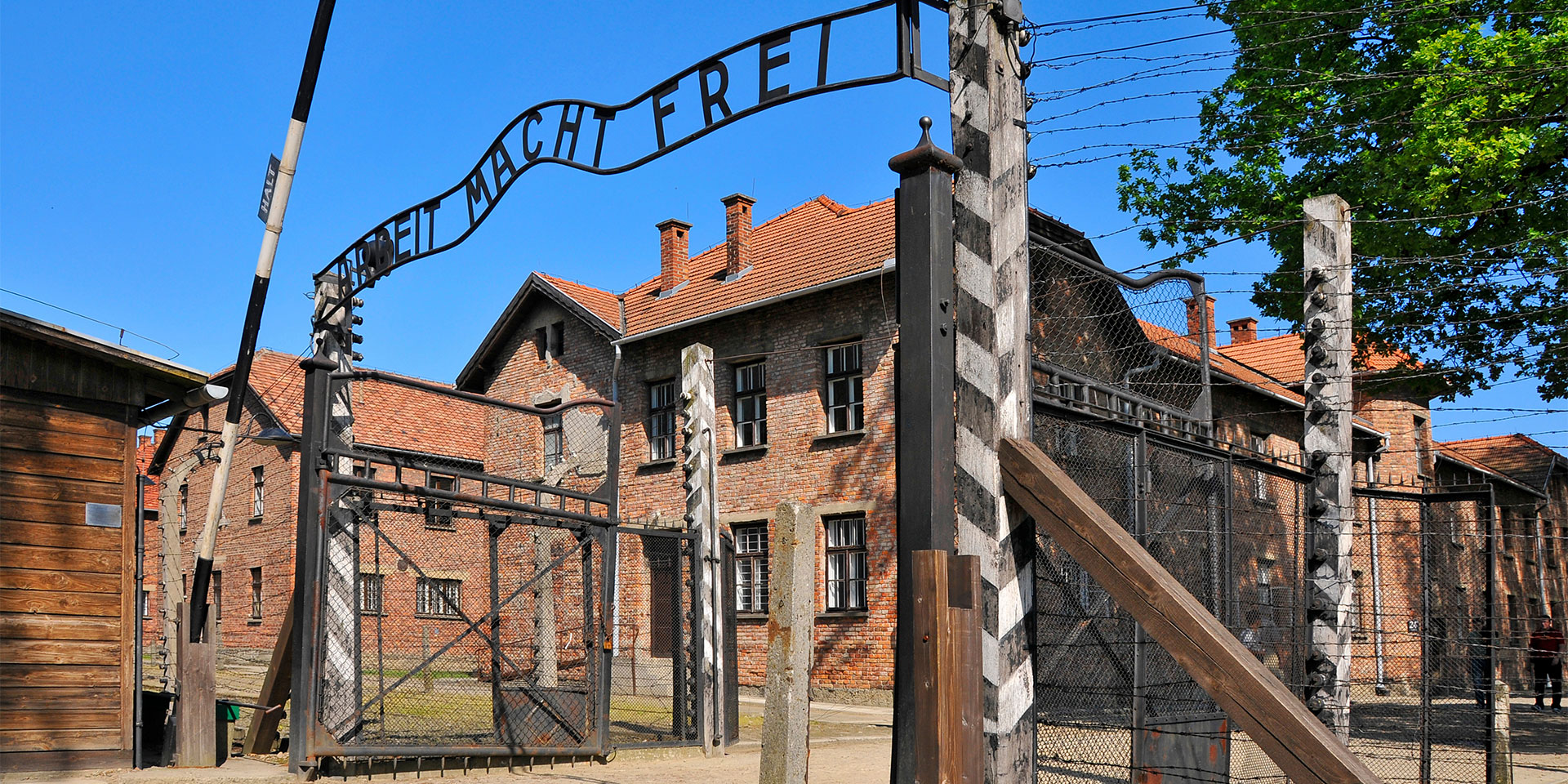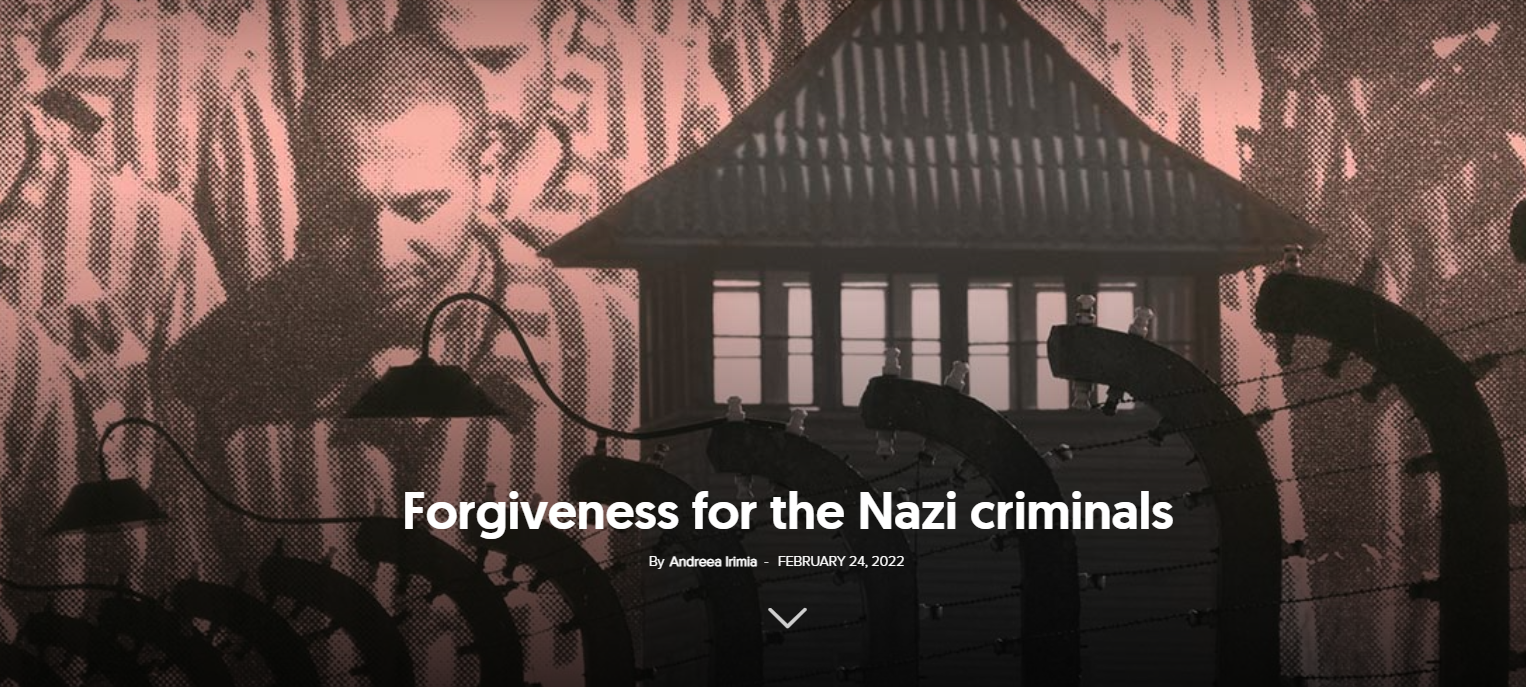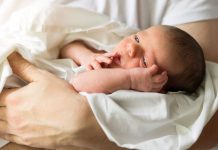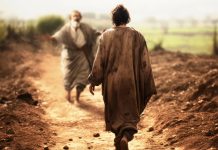May 1944. The train stopped at the station and twins Eva and Miriam, with their father and mother and sisters Edit and Aliz, stepped out into the sunlight. There was war in Europe and the Nazis had gathered them and thousands of other Jews in Romania, crammed them into cattle cars and taken them to Poland.
Eva recalled that the “light of day shining upon us [was] like a blessing”. It was only a brief blessing. Her mother asked her father: “Auschwitz? It’s Auschwitz? What is this place?”
Any thoughts were interrupted by “Schnell! Schnell!” as SS guards ordered the remaining prisoners out of the cattle cars onto the platform. Bedlam ensued as people were pulled away by guards to one side or the other. Men were separated from women, children from parents. People were crying, screaming, guard dogs were snarling and barking.
“‘Zwillinge! Zwillinge!’ Twins! Twins! Within seconds a guard who had been hurrying by stopped short in front of us. He stared at Miriam and me in our matching clothes.
“‘Are they twins?’ he asked Mama.
“She hesitated. ‘Is that good?’
“‘Yes,’ said the guard.
“‘They are twins,’ replied Mama.
Without a word, he grabbed Miriam and me and tore us away from Mama.
“‘No!’ ‘Mama! Mama! No!’”
No-one could hear them in the chaos on that station platform—the “separation platform”.
“Soon we would come face to face with Josef Mengele, the Nazi doctor known as the Angel of Death. It was he who selected those on the platform who were to live and those who would die. But we did not know that yet. All we knew was that we were abruptly alone. We were only 10 years old.
“And we never saw Papa, Mama, Edit or Aliz again.”[1] The tattoo ‘A-7063’ on her left forearm would be a reminder for the rest of her life.
“I refused to die”
The girls joined the estimated 1500 sets of twins subjected to medical experiments at Auschwitz under the guidance of Mengele. Eva recalled being separated from her sister and being injected with an unknown substance that likely caused her temperature to spike.
The Auschwitz doctors observed her closely, as if they were waiting for something to happen. Eva recalls Mengele’s words after the fever hit her. “Laughing sarcastically, he said, ‘Too bad she’s so young. She has only two weeks to live’.
“I knew he was right. But I refused to die. So, I made a silent pledge that I would prove Dr Mengele wrong. I will survive, and I will be reunited with Miriam.”[2] She survived, but they were used in a variety of experiments, including being placed naked in a room for six to eight hours, three times a week—which they found demeaning.
January 27, 1945
Both girls survived until they were liberated by Russian troops. Eva describes them in this way, “They were smiling from ear to ear,” she says. “And the most important part for me was that they did not look like the Nazis. We ran up to them. They gave us chocolates, cookies and hugs. And this was my first taste of freedom.” It was four days before their 11th birthday.
When the camp was liberated, they were put in the care of nuns who gave them a lot of toys. “That to me was in a strange way insulting, because they did not understand that I was no longer a child and I was no longer playing with toys…I’m sure they tried their best, but they really did not understand, at age 11, what we survived. I never played with toys again. My childhood was lost in Auschwitz forever.”[3]
None of their family members survived. The sisters emigrated to Israel in 1950. Eva and her husband—also a Holocaust survivor—moved to the United States in the 1960s.
1993
Eva was invited to lecture before some doctors in Boston. “I was asked if I could bring a Nazi doctor with me. I thought it was a mad request.” She had been in a documentary about Auschwitz a few years earlier that had also featured Dr Hans Munch who had been a doctor there, but not involved in Mengele’s medical experiments. When she contacted him, he agreed to record a video interview with her in his home.
When she went to Germany for the interview, she was fearful of meeting him. “When I arrived at his home, he treated me with the utmost respect. I asked him if he’d seen the gas chambers. He said this was a nightmare he dealt with every day of his life. I was surprised that Nazis had nightmares too.”
While there, Eva asked if he would come with her to Auschwitz to sign a document confirming what had happened there. She wanted a former Nazi to do this because revisionist “historians” were beginning to deny the horror of the death camps. He agreed.
January 27, 1995
They and others gathered at Auschwitz on the 50th anniversary of the liberation of those still alive in the camp. For months Eva had searched for a meaningful thank-you gift for Munch, without success.
“Then the idea of a forgiveness letter came to my mind. I knew it would be a meaningful gift, but it became a gift to myself as well, because I realised I was not a hopeless, powerless victim.
“When I asked a friend to check my spelling, she challenged me to forgive Dr Mengele too. At first, I was adamant that I could never forgive Dr Mengele but then I realised I had the power now—the power to forgive. It was my right to use it. No-one could take it away.”
At Auschwitz, as part of the commemoration, Eva and her two children, Dr Munch, his wife and children and a grandchild met together by the ruins of the gas chambers. She reported, “Dr Munch signed his document about the operation of the gas chambers and read my document of forgiveness and signed it. As I did that, I felt a burden of pain was lifted from me. I was no longer in the grip of hate; I was finally free.
“The day I forgave the Nazis, privately I forgave my parents whom I had hated all my life for not having saved me from Auschwitz. Children expect their parents to protect them; mine couldn’t. And then I forgave myself for hating my parents.
“Forgiveness is really nothing more than an act of self-healing and self-empowerment. I call it a miracle medicine. It is free, it works and has no side effects.”[4]
July 4, 2019
Eva died of natural causes only a few kilometres from Auschwitz where she was leading an educational summer trip through the concentration camp. She was 85 years of age.
Bruce Manners is a retired Signs of the Times Australia editor, having served in the role from 1989–2003. He lives in Melbourne, Australia. A version of this article first appeared on the Signs of the Times Australia/New Zealand website and is republished with permission.




















